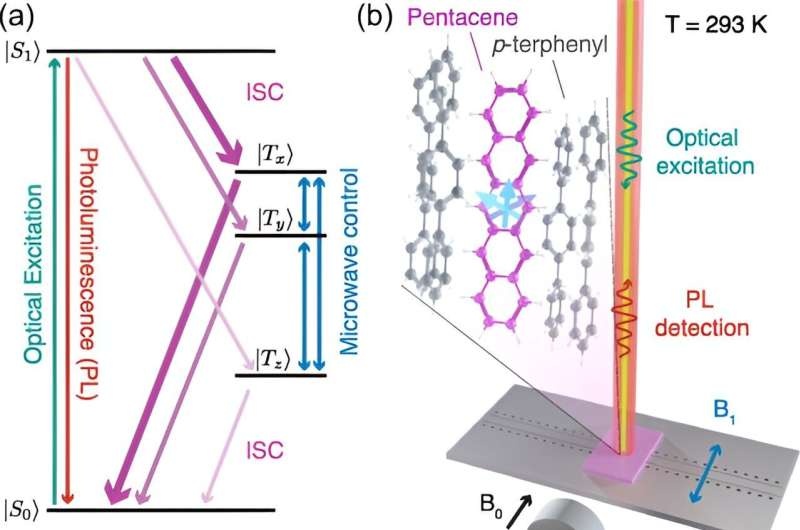The work lays the foundation for new quantum sensors that will not require cryogenic cooling, a critical step toward useful devices for real-world applications. They could transform fields like biology, materials science and electronics, giving us unprecedented views of the world.

Controlling Quantum Spins
This development a result of being able to simulate and control the quantum properties of organic molecules, including their electron spins.
Electrons moving around in the molecules have spins, which act like tiny quantum-mechanical magnets; so with lasers, the researchers could align these spins. They could then use carefully-directed pulses of microwave radiation to control these spin states, putting them into desired quantum states.
But above all, they could do this under room temperature conditions, unlike the low temperatures in cryogenic experiments. This is a huge step forward, offering a route to practical implementations of these quantum sensors beyond the physics lab.
Measuring Quantum Coherence
A second important achievement in this discovery is the capability to measure the quantum coherence of the molecules. Quantum coherence is a manifestation of how long we are able to maintain our molecule states. It is, therefore, one of the most essential properties that determines the quantum sensor performance.
The team could optically observe quantum coherence of the molecules persisting for a microsecond, even at room temperature. That is considerably longer than the time it would take to manipulate the states, so future quantum sensors that leverage this method should be able to learn a lot about how they interact with these properties.
And the longer the quantum states can be preserved, the more accurate and sensitive these sensors will be. It might enable new prospects in fields including magnetic resonance imaging, materials characterization and the investigation of organic systems.
Conclusion
A critical step towards a new generation of practical, room-temperature quantum sensors .This advance in quantum technology paves the way for tomrs that can be atomically scaled and operates at or near room temperature. With this new approach to understanding the electronic properties of molecules, researchers have shown that they can create practical quantum sensing devices capable of functioning at room temperature, without the need for ultracold liquid instruments or illumination with lasers. We might expect to see a wave of next-gen quantum-enabled devices that give us new and unheard-of types of vision into our world.
